Age Ratings
WEB / MOBILE / DESKTOP / CONSOLE
PRINCIPAL DESIGNER
Roblox
Abstract
Age Ratings played an essential part of the company's "aging up" initiative which would allow experiences to receive age ratings and give older players and creators access to mature experiences and assets.
Role & Objectives
- Lead designer, sole designer (IxD and VisD) responsible for the design strategy and delivery of age suitability features for the Creator Cloud Content vertical and all content touchpoints for creators and players
- Launched player-side age ratings and parental controls, content moderation, and 17+ creation workflows
- Worked closely with Creator Cloud, Studio, Growth, App Experience, Trust & Safety, and UGC teams to unify age rating policy and UX/UI patterns
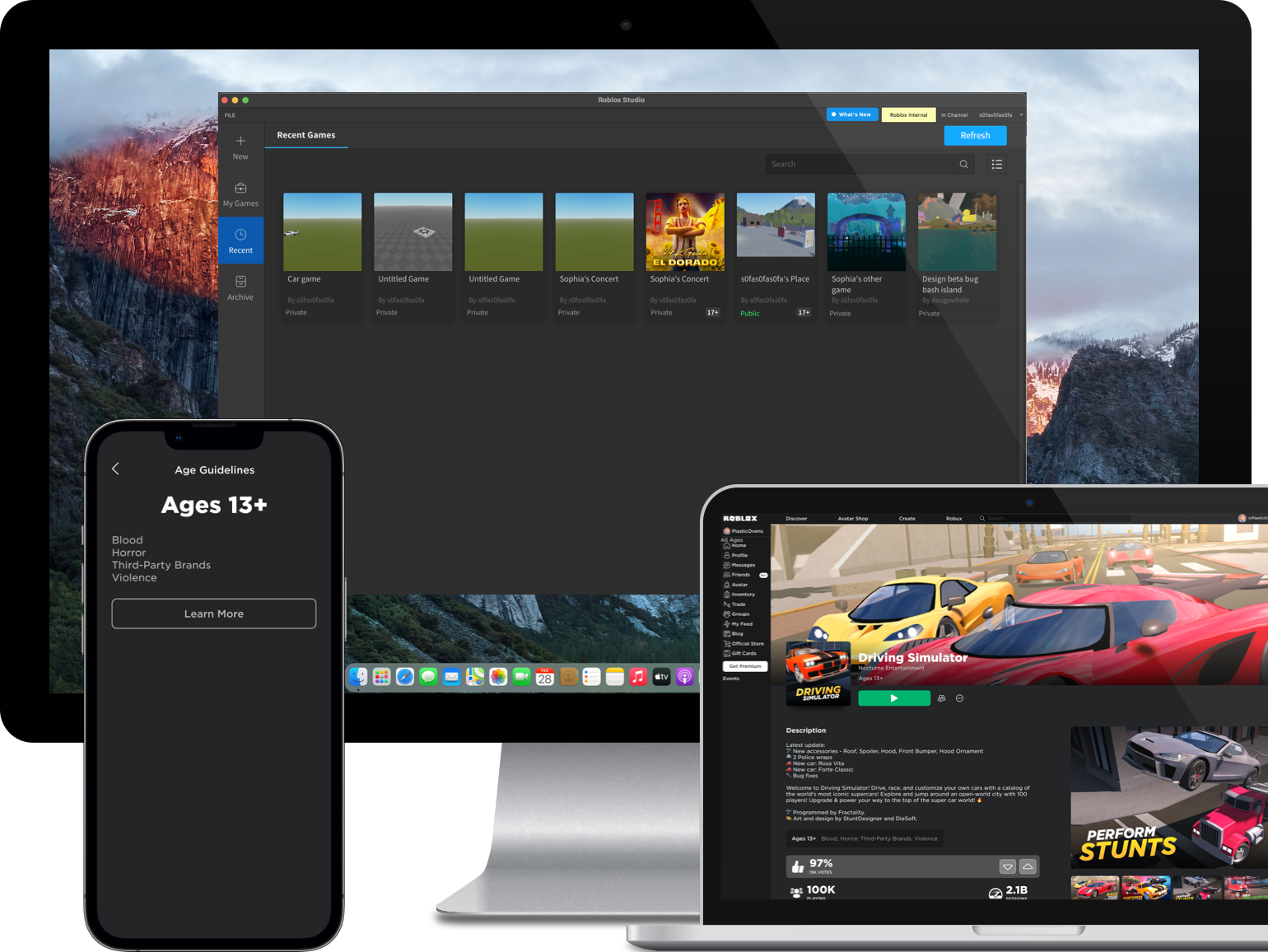
Experience Age Ratings

Age ratings and content descriptors follow a similar format to video game ratings (ie. ESRB)
- Age ratings are meant to give creators, players, and parents a sense of what the age suitability of an experience is.
- Age ratings are generated by creators and reviewed by moderators while access restrictions are enabled by parental controls. Users can also report inaccurate ratings.
- Officially, age ratings had to be called "Age Guidelines" or "Experience Guidelines" as the experiences are not legally reviewed by a rating agency.
Player-side Age Ratings
Cross-platform UI patterns for showing age ratings and content descriptors

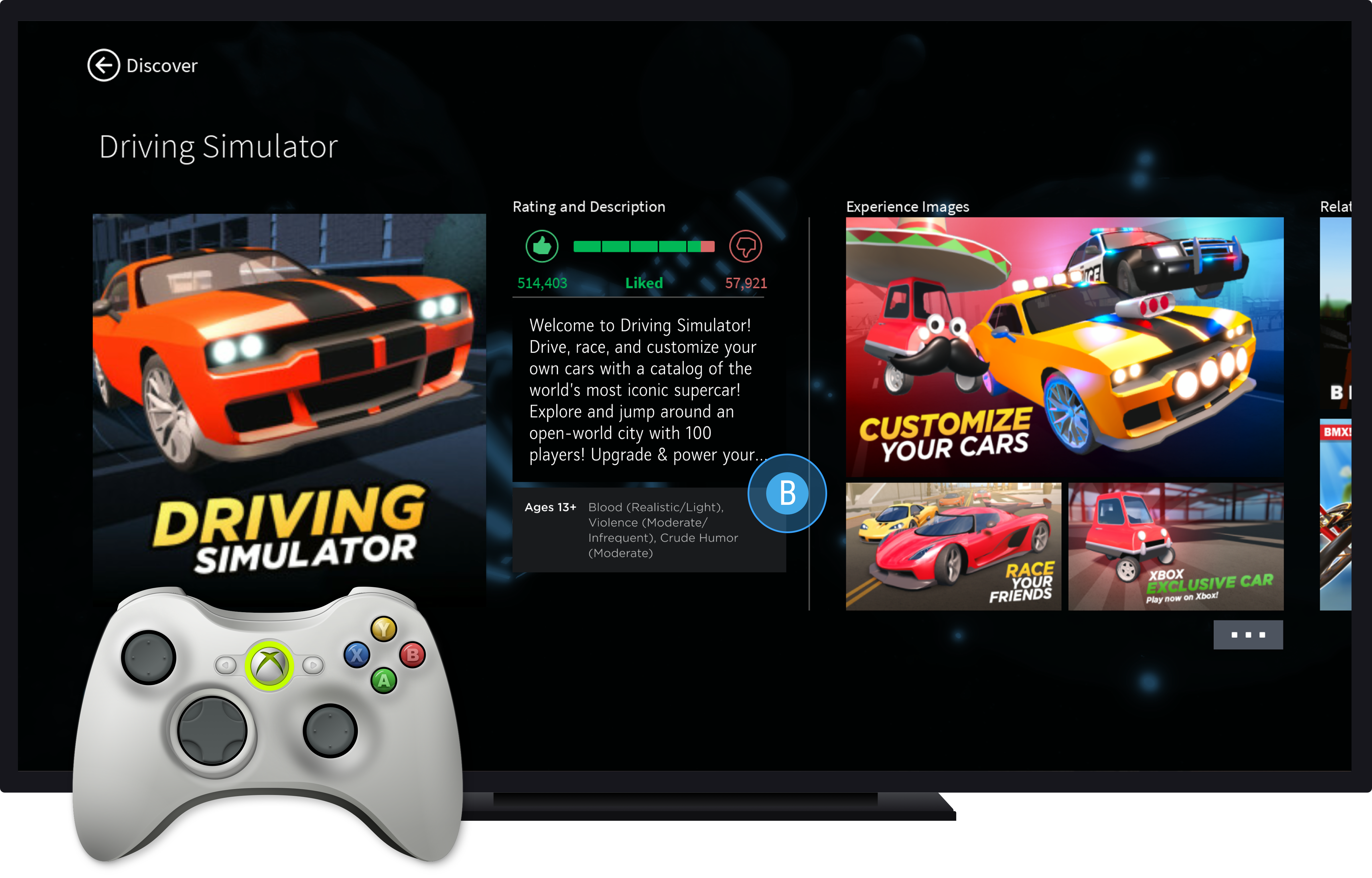

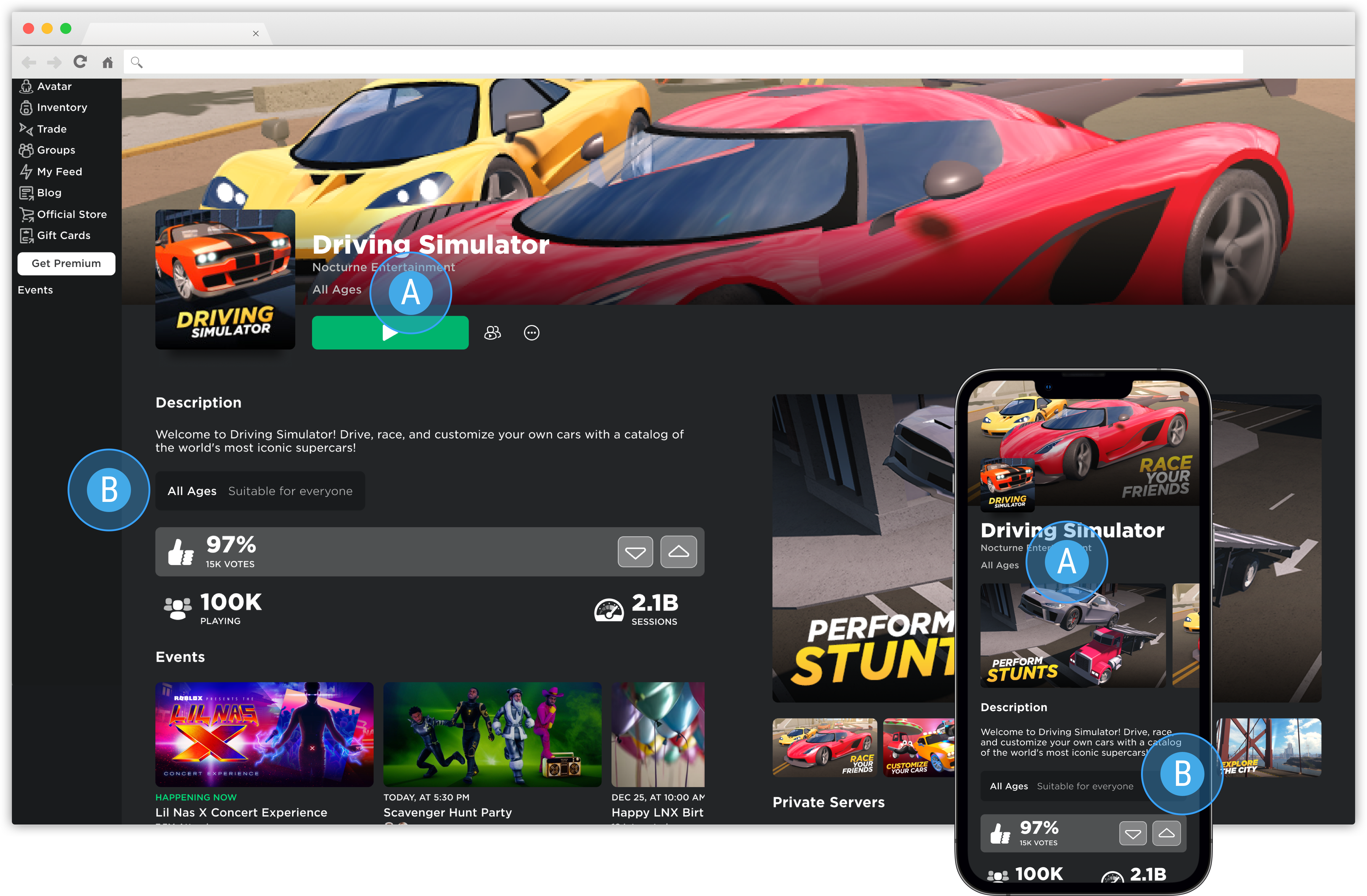
- Age Rating: Shown as a subtext near the experience title and developer name. This "above the fold" pattern follows guidance typically required by rating agencies and expected by consumers. It's also shown as a metadata line item under the Description section in the Desktop and Mobile App.
- Content Descriptors: Age ratings are described by listing the content types and frequency in which they occur in the experience. Using progressive disclosure, this information can be found under the description section or in a separate modal. For console and web on mobile and desktop, selecting the age rating component or the age rating leads the user to the age rating policy page.
- Learn More CTA: For the desktop or mobile app, selecting the "Learn More" CTA leads the user to the age rating policy page
To maintain consistency, age ratings and content descriptors had to follow the same UI pattern across console, mobile app, web browser, and desktop app
Creator-side Age Ratings
Creators can access age rating details in Creator Dashboard
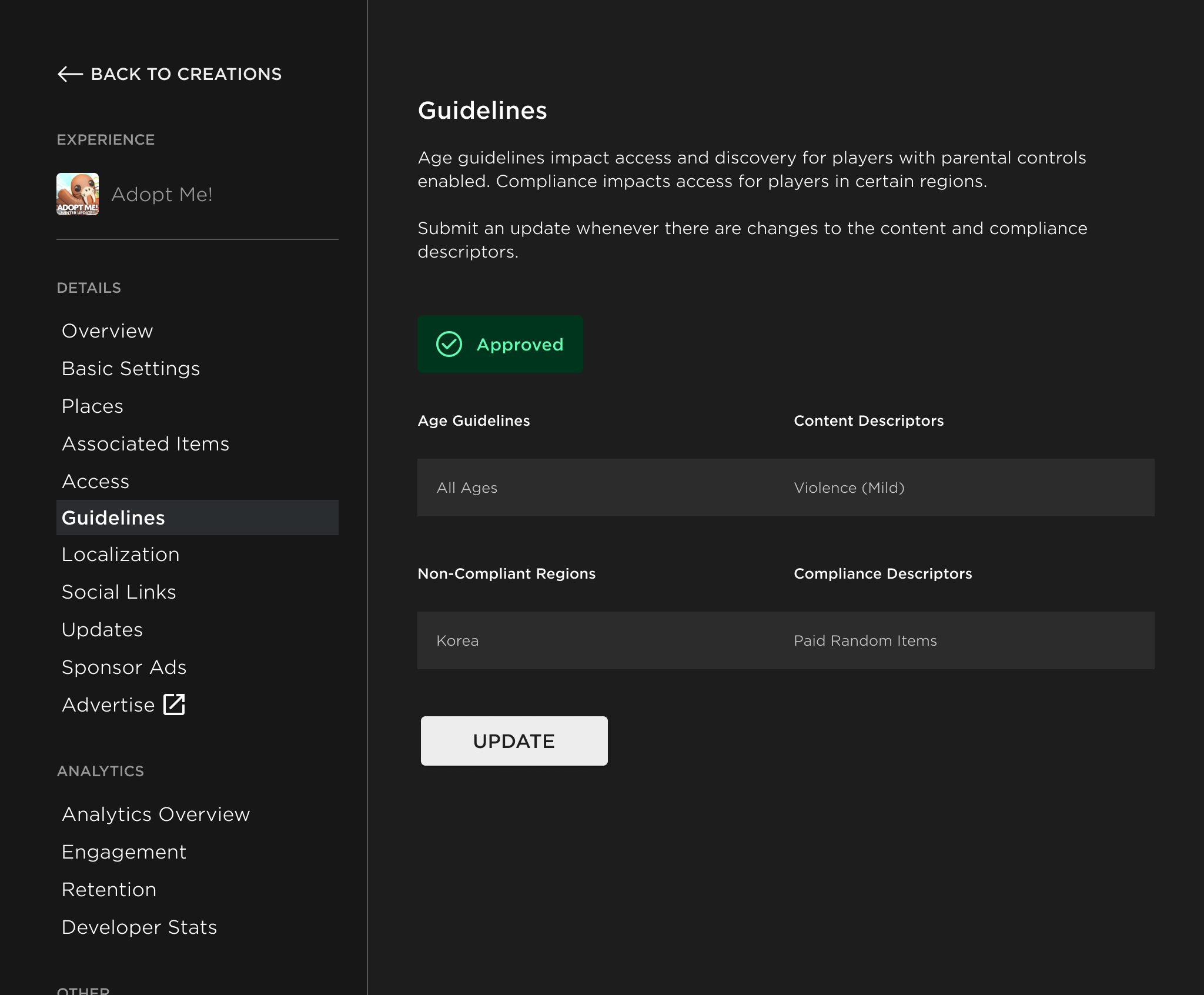
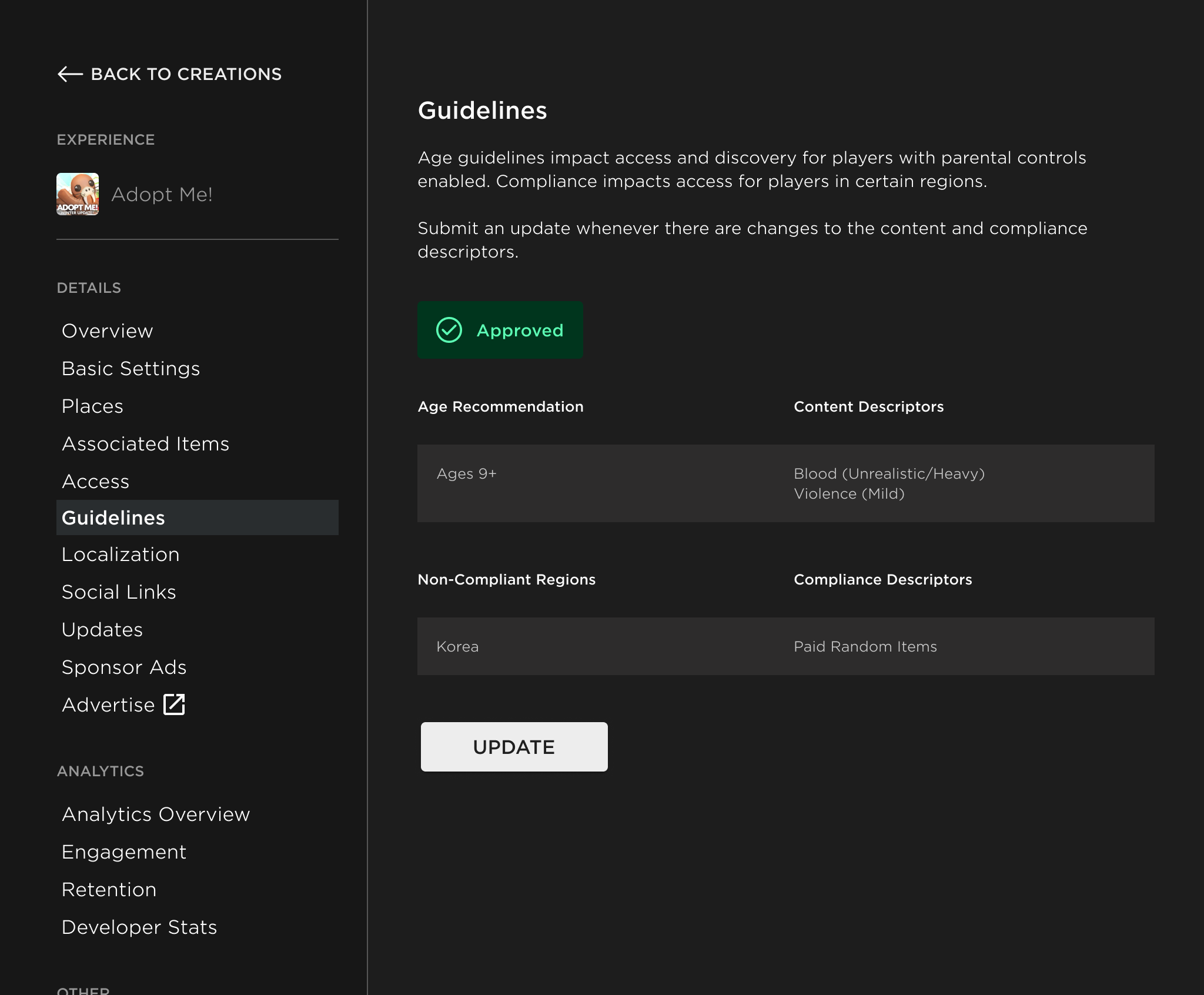

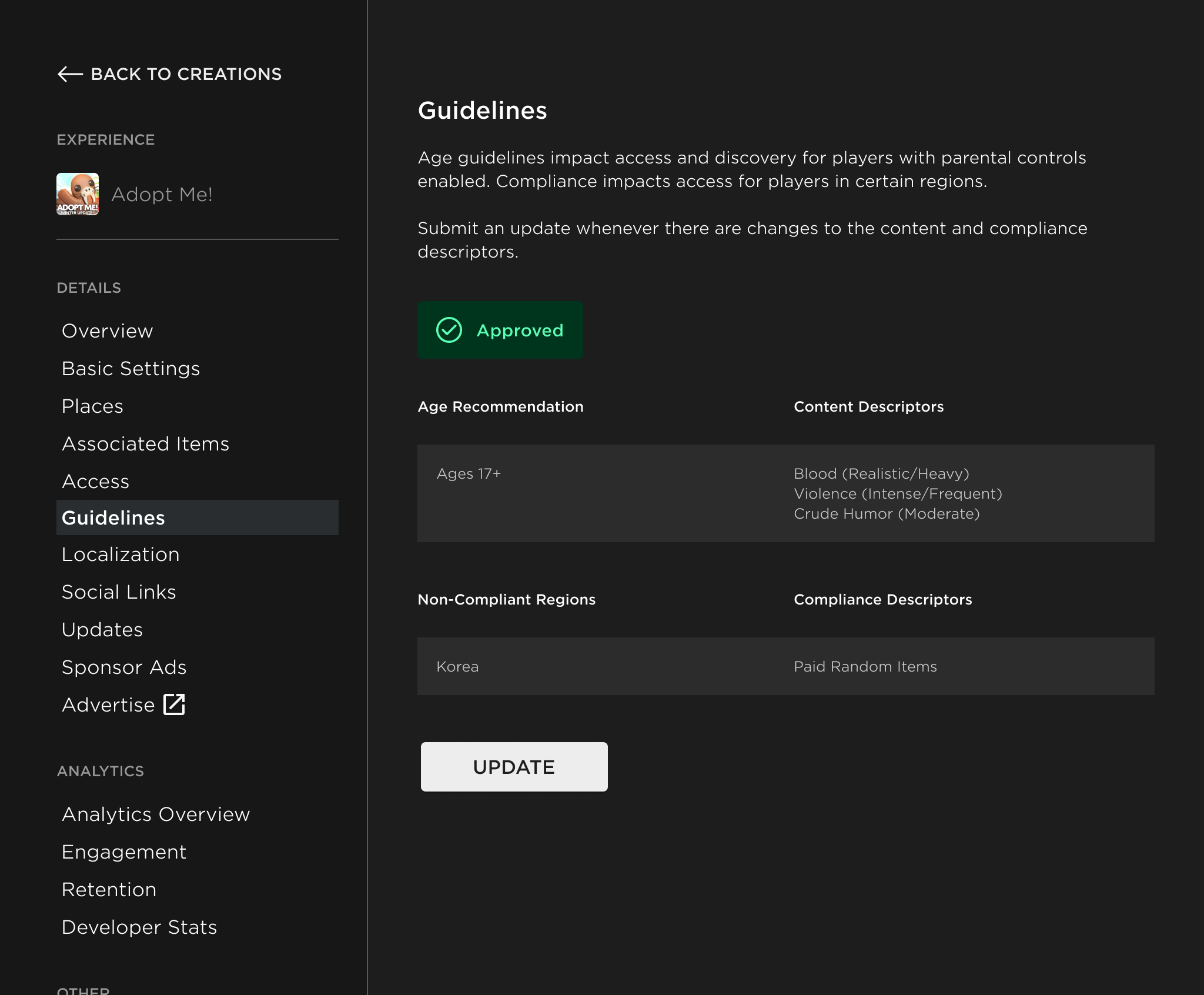


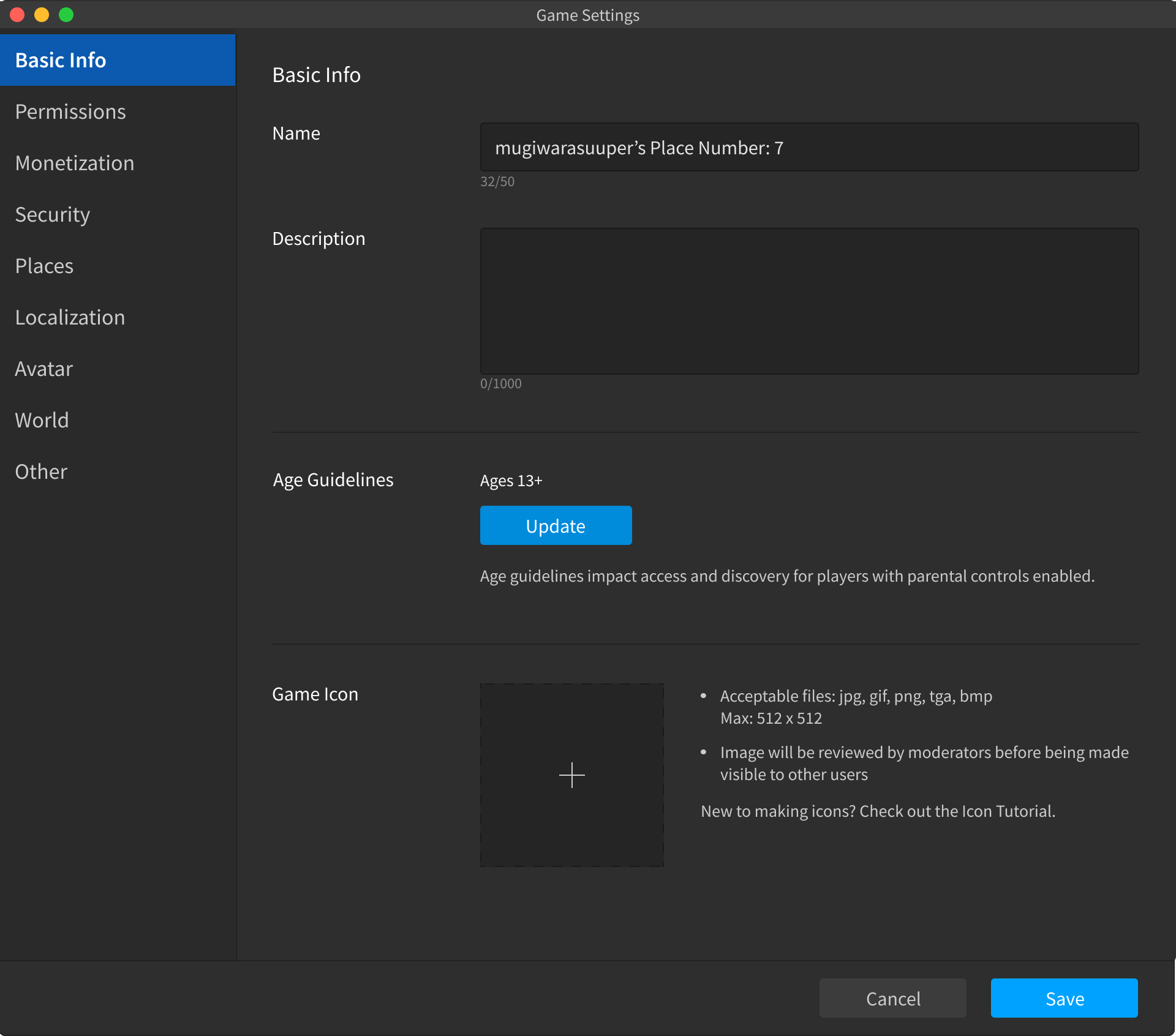

Creators submitted a questionnaire via Creator Dashboard to generate an age rating and content descriptors. Creators can also do this via Studio's Game Settings.
- Creators can update the content descriptors at any point by updating the questionnaire in Creator Dashboard. Creators can also update the compliance descriptors that would impact which regions can access the experience.
- Moderators would review the questionnaire submission and either approve or reject the age rating.
- It is up to the discretion of the creator to keep their age rating up to date. Players can submit a report for inaccurate age ratings.
17+ Content Creator Restrictions
17+ restricted access shown across Studio and Creator Dashboard
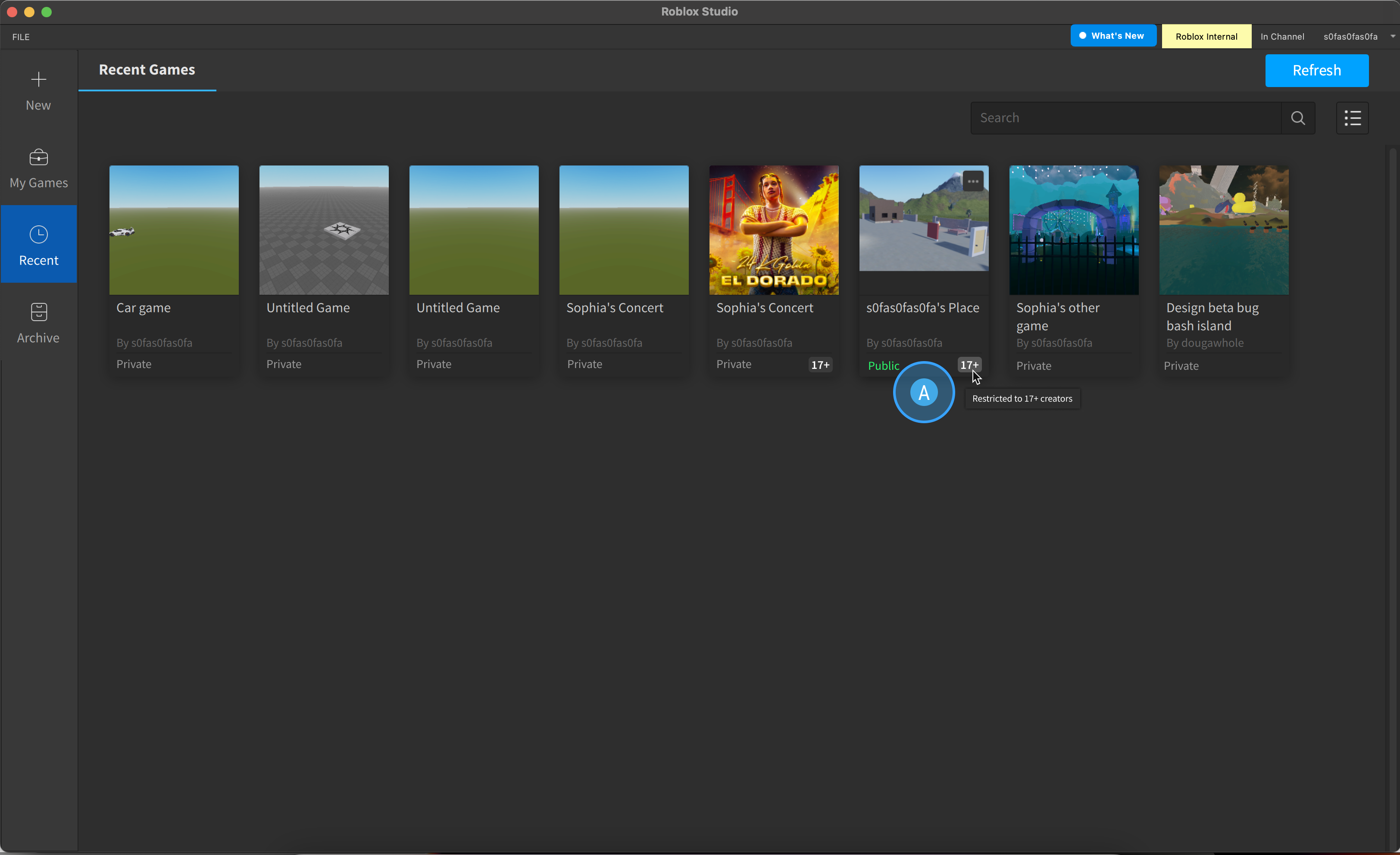

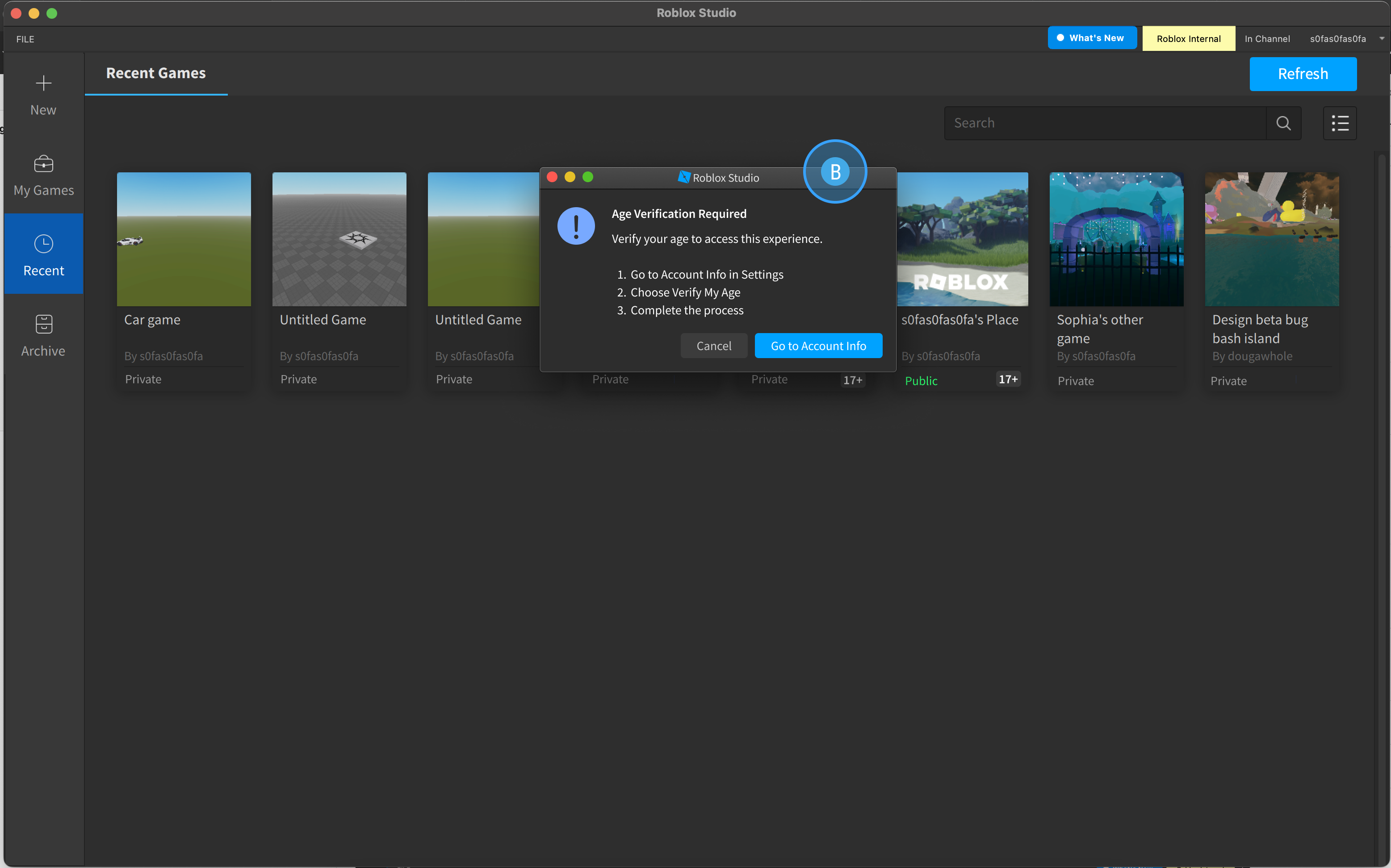
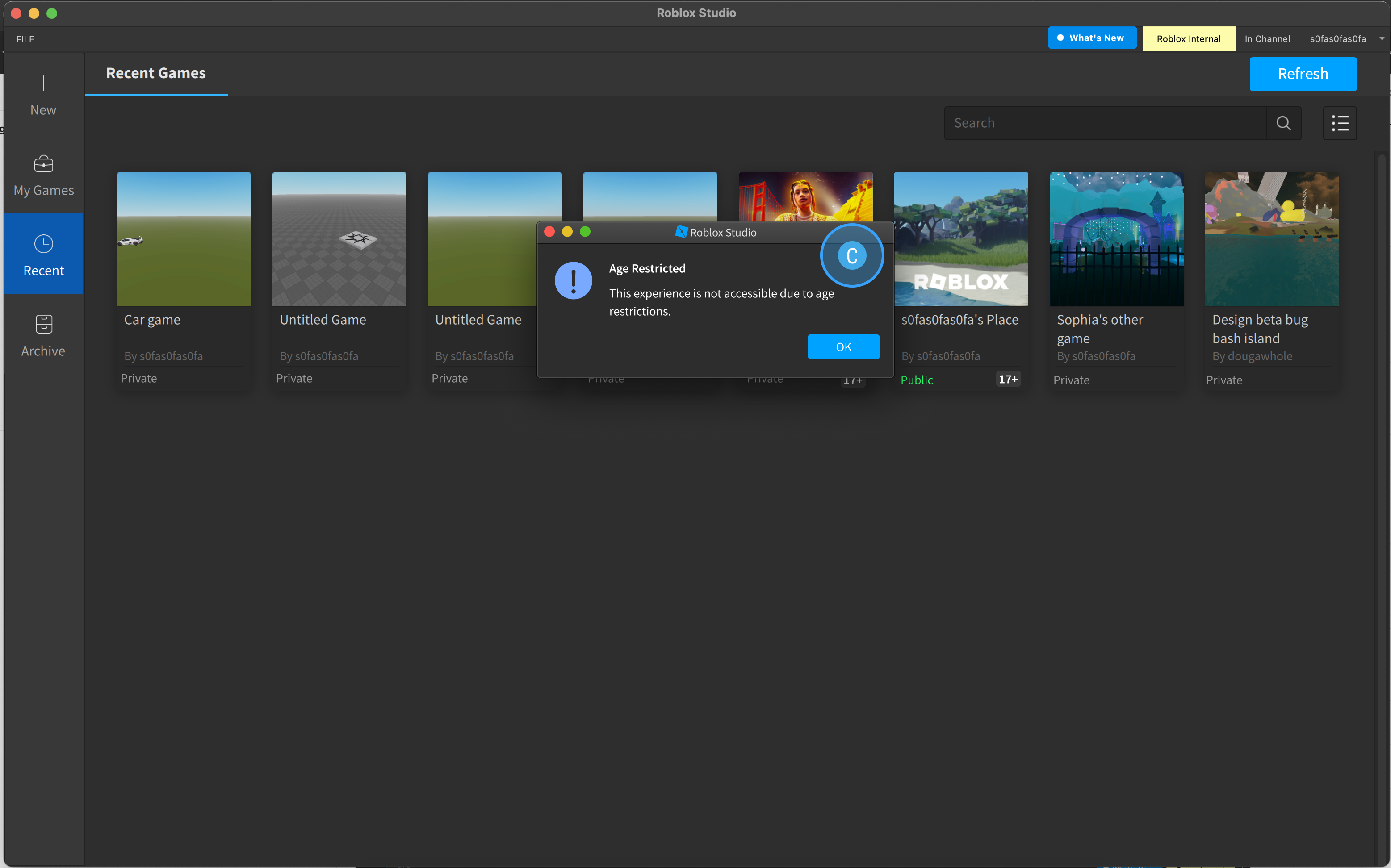
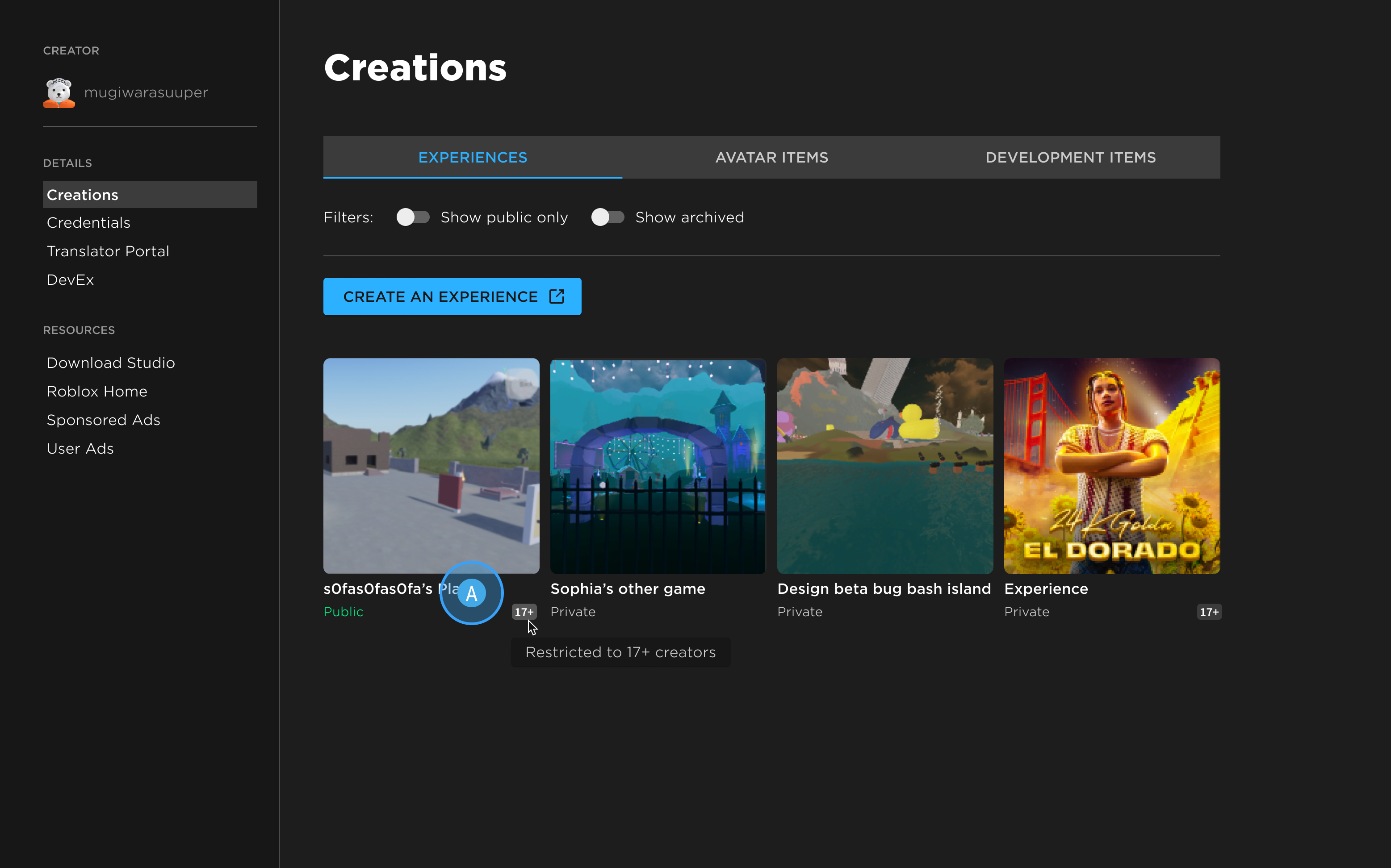
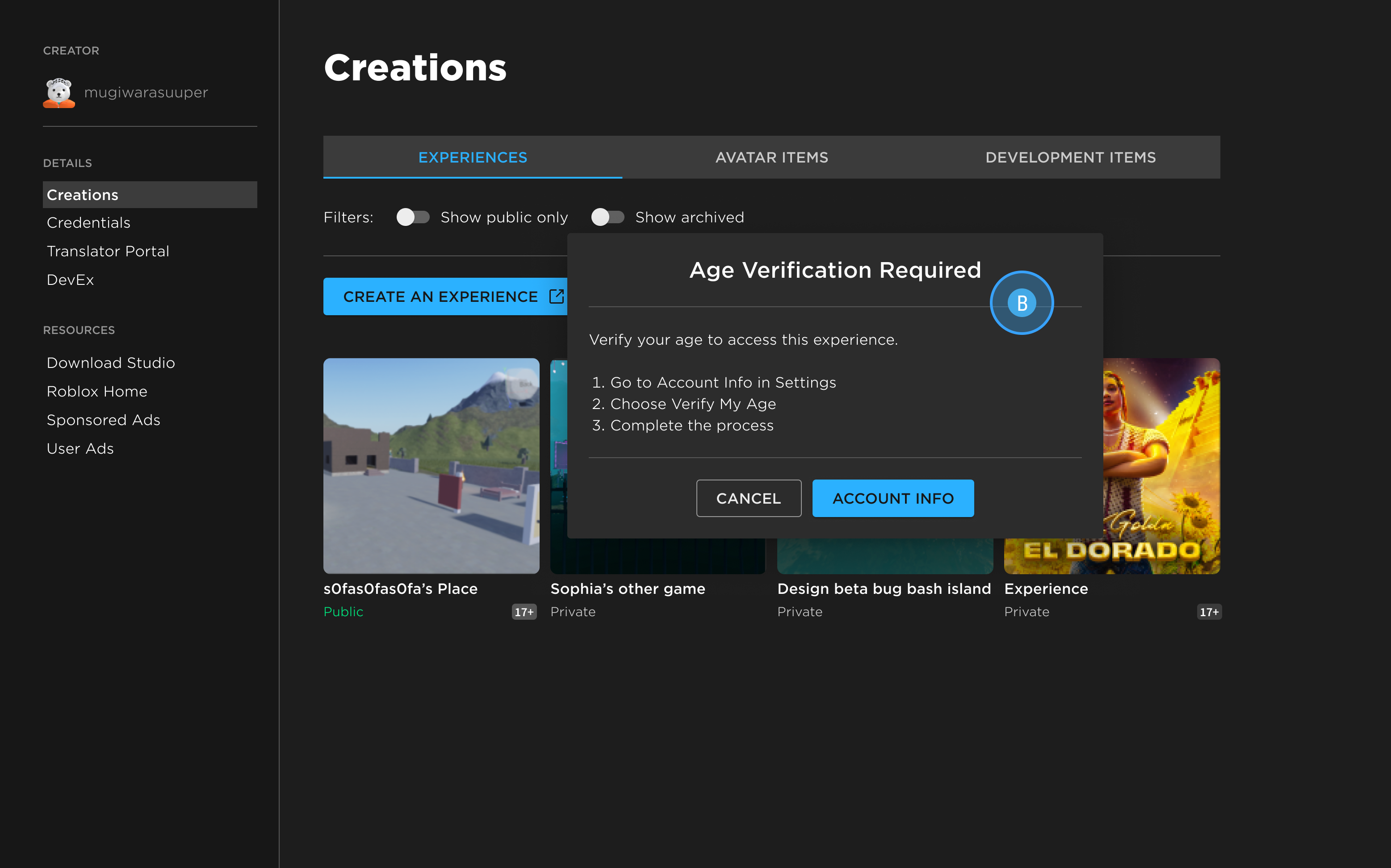

- Ages 17+ Label: A tooltip explains that the experience is Ages 17+ and can only be accessed by 17+ creators.
- Age Verification Required Modal: If the creator's date of birth on their profile states they are over 17, they need to officially verify their age to access the experience. Selecting "Account Info" would lead the user to their profile where they can verify their age.
- Age Restricted Modal: If the creator's date birth on their profile states they are under 17, they are not allowed to access the experience.
Creators must be 17+ age verified in order to access 17+ experiences in Studio or Creator Dashboard. This would protect underage creators from accessing mature content.
17+ Restrictions on Team Create
Loss of access and collaborator restrictions for group-owned experiences
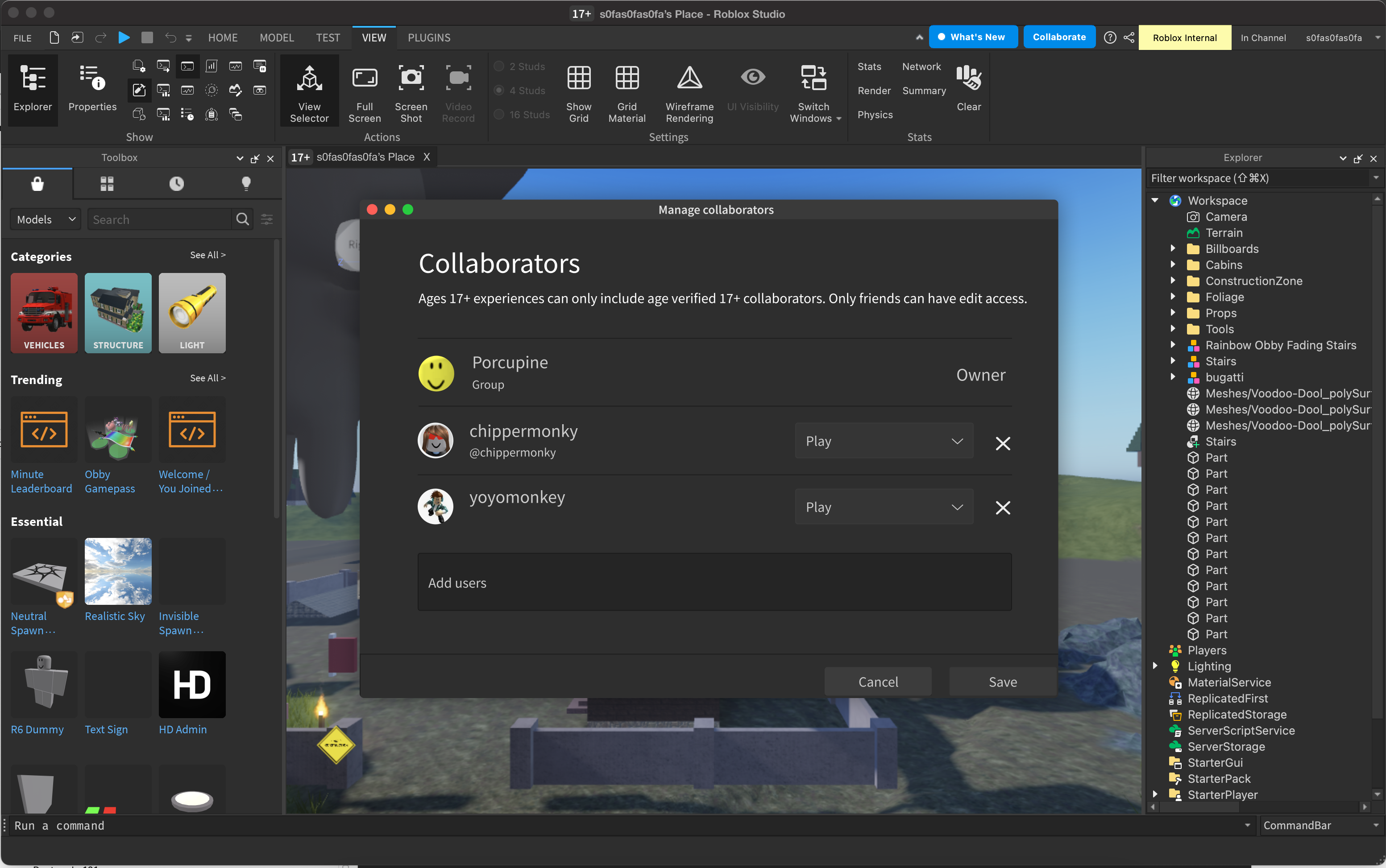
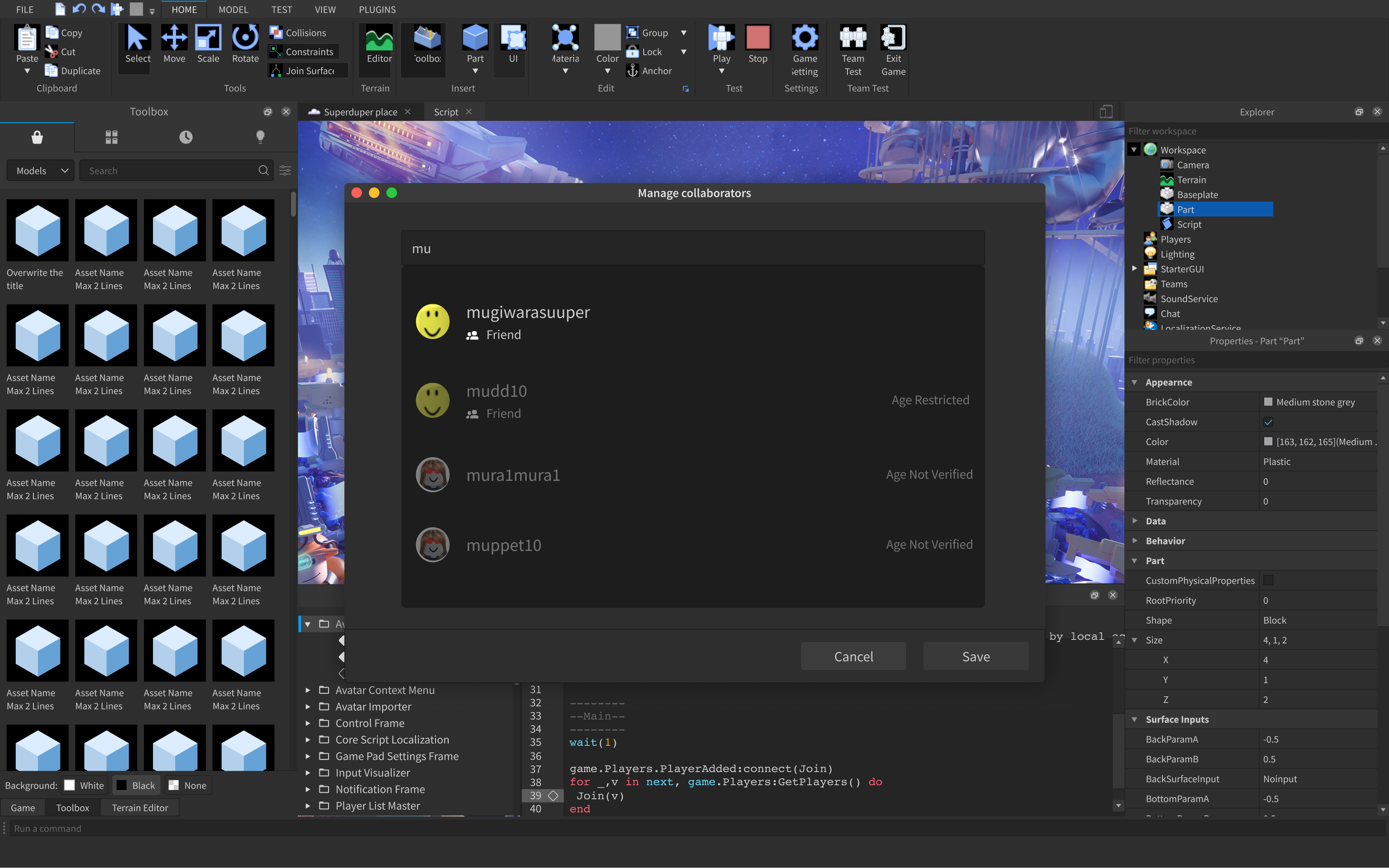


Collaborators on Team Create for a 17+ experience must be age verified 17+ to have access
- When adding collaborators, users who are under 17 or not age verified 17+ are shown in a disabled state in the selection list. Showing the reasoning informs the admin on what next steps can be taken.
- Collaborators who are under 17 or not age verified 17+ immediately lose access and cannot publish or save to the experience in the cloud. These creators can only publish and save as a new experience.
Current Design
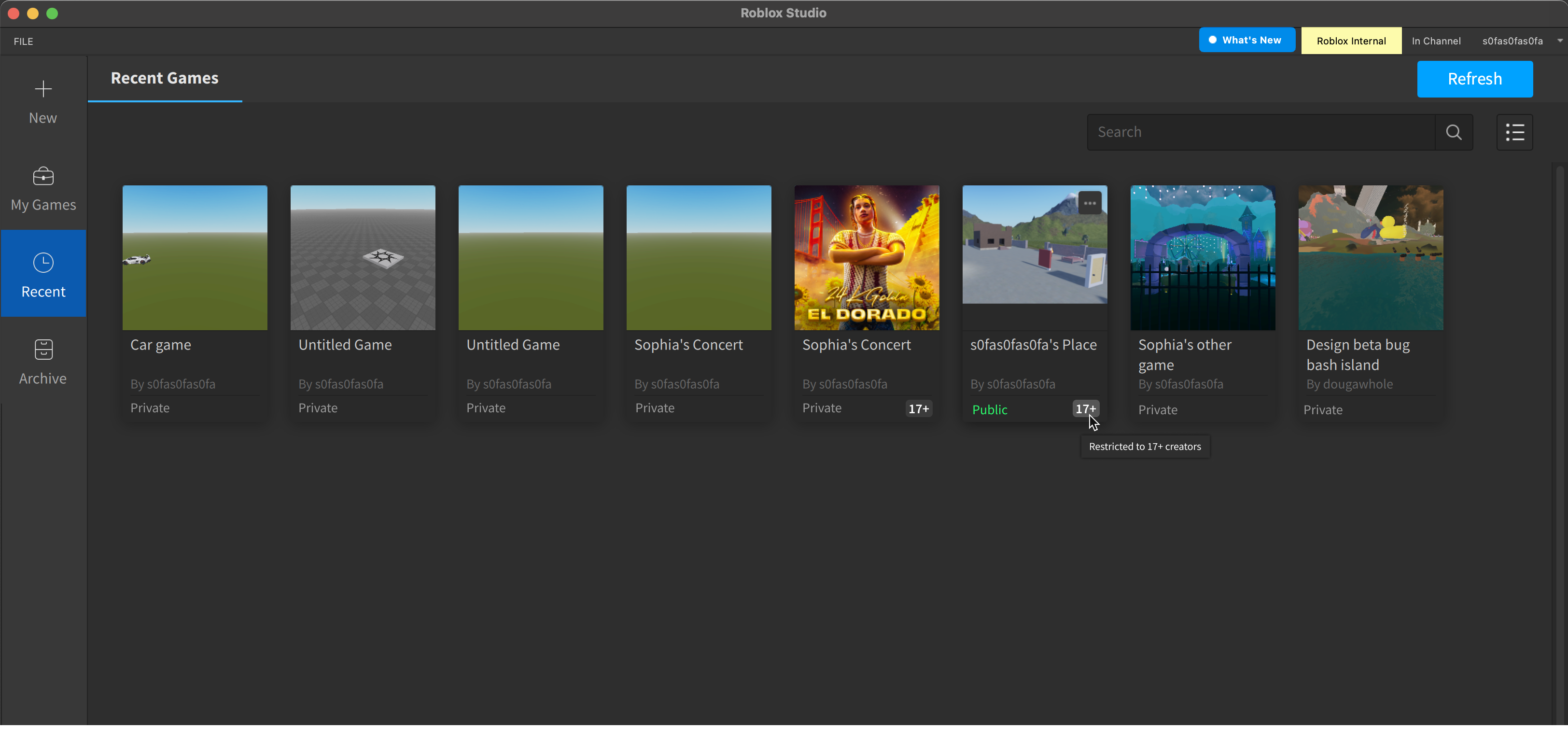
Explorations
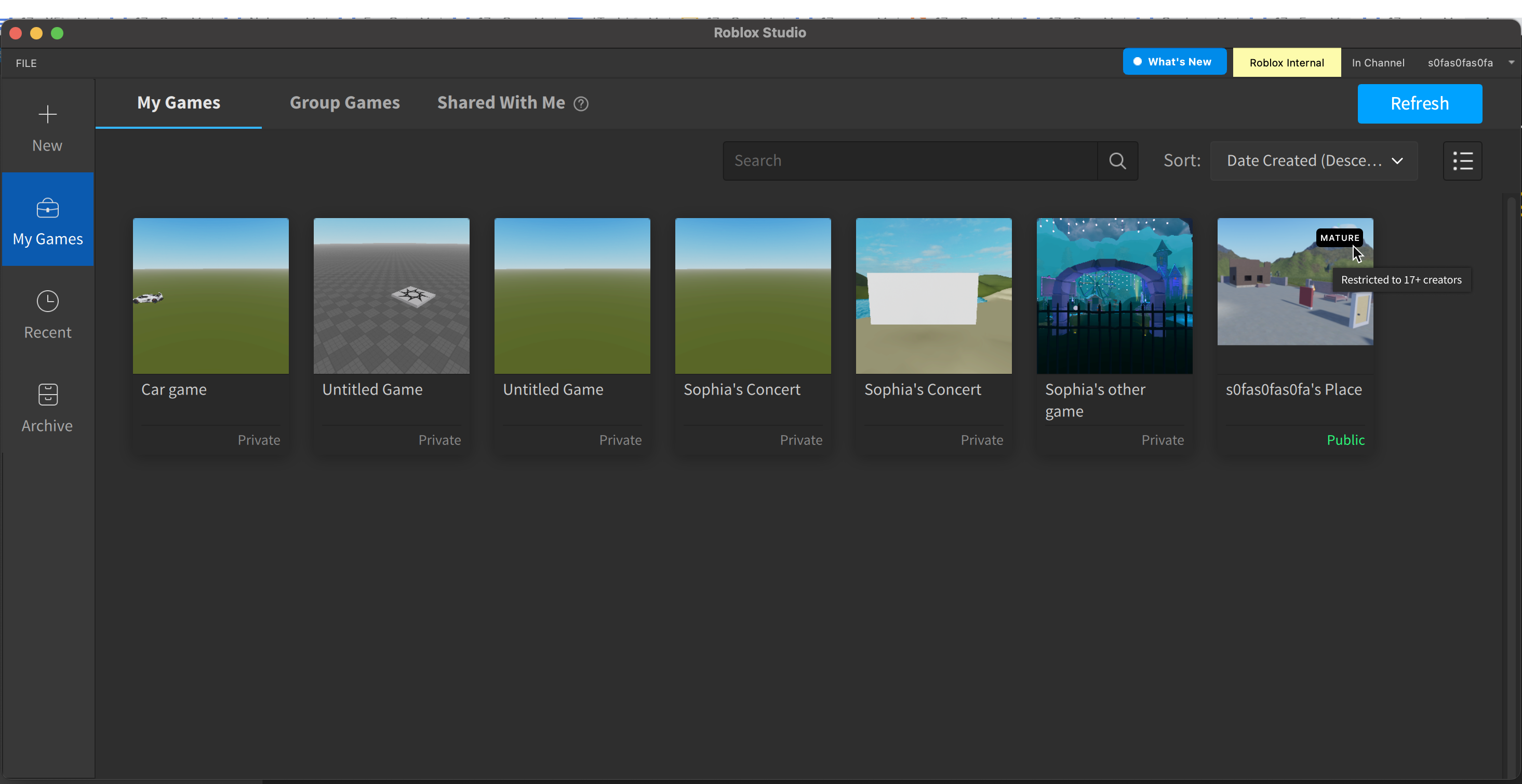
Ages 17+ Label Considerations
UX ISSUES
- Using "17+" or "Ages 17+" in a label to signify creator age restrictions and as a age rating meant that the term had a double meaning. This led to concerns as to whether users would be confused if the same policy applies to other age ratings.
- Showing only 17+ and not the other age ratings on experience tiles presents an inconsistent UI pattern
IDEATIONS
- Idea #1: In the video game industry, the term "Mature" is defined as games that are suitable for players ages 17+.
- Idea #2: Using an icon that represents restriction is an alternative to having to find the right term and doesn't require localization.
Post-launch User Research Analysis
User interviews revealed issues with user understanding of age suitability features
- There was general confusion as to how age ratings and content descriptors were defined and deteremined by moderators and company policy. Users felt content desciptors were vague and were left up for interpretation.
- Users equally feared getting moderated at the risk of their experience going offline or getting banned. Users would avoid making any changes that they deemed would get their experience moderated, but would sometimes get unexpedtedly moderated anyways without a clear explanation.
- The communication of the features and what was expected of creators was seen as poor and not reliable. They relied more on interpretations and first-hand experiences of other creators in the community.
- Indie developers and smaller teams had no incentive to create experiences for older audiences because the majority of Roblox users are kids.